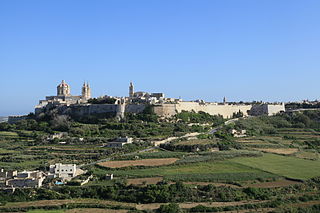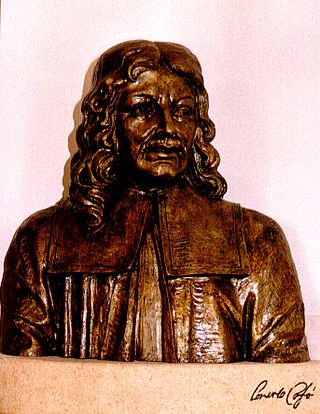
Victoria, also known among the native Maltese as Rabat or by its title Città Victoria, is an administrative unit of Malta, and the main town on Gozo. Victoria has a total population of 6,901, and by population, is the largest locality in Gozo.

Mdina, also known by its Italian epithets Città Vecchia and Città Notabile, is a fortified city in the Northern Region of Malta which served as the island's capital from antiquity to the medieval period. The city is still confined within its walls, and has a population of 250, but it is contiguous with the town of Rabat, which takes its name from the Arabic word for suburb, and has a population of over 11,000.
Easter is one of the most significant events in the religious and social calendar, celebrated heavily in the European country of Malta.

Maltese architecture has its origins in prehistory, and some of the oldest free-standing structures on Earth – a series of megalithic temples – can be found on Malta. The islands were colonized by the Phoenicians and later the Romans, who established the cities of Melite and Gaulos. Although these were substantial settlements and are known to have had numerous temples, churches and palaces, few remains have survived apart from some architectural fragments.

Malta is for non-local government purposes divided into districts as opposed to the local government localities. The three main types of such districts – statistical, electoral at national level, and policing – have no mainstream administrative effect as the local councils form the first-tier – moreover only administrative tier – divisions of the country.

The Citadel, also known as the Castello, is the citadel of Victoria on the island of Gozo, Malta. The area has been inhabited since the Bronze Age, and the site now occupied by the Cittadella is believed to have been the acropolis of the Punic-Roman city of Gaulos or Glauconis Civitas.

The Malta Maritime Museum is a maritime museum in Birgu, Malta. It is housed in the former Royal Naval Bakery, which was built in the 1840s as the main bakery for the Mediterranean Fleet. The museum has a collection of over 20,000 artifacts, and it is the largest museum on the island.
This page list topics related to Malta.

The Tarxien Temples are an archaeological complex in Tarxien, Malta. They date to approximately 3150 BC. The site was accepted as a UNESCO World Heritage Site in 1992 along with the other Megalithic temples on the island of Malta.

In the small Mediterranean island nation of Malta, the predominant religion is Roman Catholicism.

Lorenzo Gafà (1639–1703) was a Maltese Baroque architect and sculptor. He designed many churches in the Maltese Islands, including St. Paul's Cathedral in Mdina and the Cathedral of the Assumption in Victoria, Gozo. He was the younger brother of the sculptor Melchiorre Cafà.
Maltese heraldry is the design, display, and study of armorial bearings as used in the traditions of Malta.

The National Museum of Archaeology is a Maltese museum in Valletta, with artefacts from prehistory, Phoenician times and a notable numismatic collection. It is managed by Heritage Malta.
Post codes in Malta are seven-character strings that form part of a postal address in Malta. Post codes were first introduced in 1991 by the mail operator MaltaPost. Like those in the United Kingdom and Canada, they are alphanumeric.

In Malta most of the main roads are in the outskirts of the localities to connect one urban area with another urban area. The most important roads are those that connect the south of the island with the northern part, like Tal-Barrani Road, Aldo Moro Street in Marsa and Birkirkara Bypass.

The fortifications of Malta consist of a number of walled cities, citadels, forts, towers, batteries, redoubts, entrenchments and pillboxes. The fortifications were built over hundreds of years, from around 1450 BC to the mid-20th century, and they are a result of the Maltese islands' strategic position and natural harbours, which have made them very desirable for various powers.

Canon Giovanni Pietro Francesco Agius de Soldanis, often called de Soldanis, was a Maltese linguist, historian and cleric from the island of Gozo. He wrote the first lexicon and systematic grammar of the Maltese language, and he was the first librarian of the Bibliotheca Publica, the precursor of the National Library of Malta.
Stefano Erardi (1630–1716) was a Maltese painter whose works may be found in many churches around the Maltese Islands. His style has been described as either late Mannerist or Baroque.













